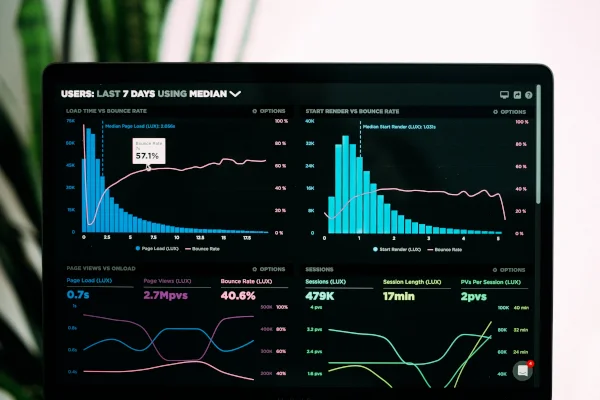Hey there, Search Engine Optimization enthusiasts! In this guide, we’re going to dive into the nitty-gritty of technical SEO audits. As we all know, technical SEO is an absolute must if you want your website to rank higher in search engine results pages. That’s why it’s essential to conduct a comprehensive technical SEO audit to identify any technical issues that may be holding your website back. In this guide, we’ll be exploring the essential steps required to conduct a thorough technical SEO audit, including website architecture, page speed, mobile-friendliness, site structure, metadata, duplicate content, backlinks, and competitor analysis. By the end of this guide, you’ll have a clear understanding of how to conduct a technical SEO audit and how to use the findings to make recommendations for improving your website’s search engine rankings. So, buckle up and get ready to take your SEO game to the next level!
- Crawl the Website
- Analyze Website Architecture
- Check Page Speed
- Verify Mobile-Friendliness (on multiple operating systems)
- Review Metadata
- Check for Duplicate Content
- Analyze Backlinks
- Check for Errors
- Analyze Competitor Websites
1. Crawl the Website
Use a tool like Screaming Frog or DeepCrawl to crawl the website. This will provide a comprehensive list of URLs on the website, along with metadata like page titles, meta descriptions, and header tags.
The purpose of this step is to gain a clear understanding of the website’s current status and identify any technical issues that may be impacting its search engine rankings. By crawling the website, you can ensure that all pages are included in the audit, including hidden pages and pages that may not be linked to from the main navigation.
This step is critical to ensure that you have a complete picture of the website’s technical SEO status and can use this information to make informed decisions regarding areas of improvement.
2. Analyze Website Architecture
Review the website’s architecture to ensure that it is structured logically. Meaning, does the menu and structure of the content of the website make it easy for a user to navigate? A great litmus test we like to use is if we could hand someone a phone or laptop with ZERO context for what the site is, could they easily navigate it to find out more?
This step involves checking that URLs are organized into categories, subcategories, and pages, and that all pages can be accessed within three clicks. A well-organized website architecture helps search engines, crawlers, and users to understand the content on your site, which can lead to better search engine rankings.
You are attempting to uncover any breaks in the flow of information and discovery of content to then bridge these gaps and make the pages part of one cohesive experience.
Check that the website has a logical site structure. This includes reviewing the website’s URL structure, XML sitemap, and internal linking. A well-organized site structure can help search engines to understand the content on your site and improve the user experience for visitors.
By analyzing these elements, you can identify any issues that may be impacting the website’s search engine rankings and make recommendations to improve it, such as restructuring URLs to be more descriptive and user-friendly, ensuring that the XML sitemap is up-to-date and accurately reflects the website’s content, and improving internal linking to help visitors navigate the website easily.
3. Check Page Speed
Use a tool like GTMetrix or Google’s PageSpeed Insights to check page speed. Slow page speed can negatively impact user experience and search engine rankings.
Page speed and mobile-friendliness are crucial ranking factors in search engine results pages (SERPs), and therefore it’s essential to ensure that your website is optimized for both. Think about, your phone is completing tasks on a regular basis that would have been reserved for an office of people not that long ago. That is why search engines like Google tend to heavily favor websites that work well with this shift in tools.
The purpose of this step is to identify any technical issues that may be slowing down the website or impacting its mobile-friendliness, which in turn could be affecting its search engine rankings. Common issues include unused elements of a template that must be eliminated, image files being too large or improperly sized, and too many elements attempting to load at the same time.
4. Verify Mobile-Friendliness (on multiple operating systems)
Check the website’s mobile-friendliness using Google’s Mobile-Friendly Test. For reasons we mentioned before, with the increase of mobile users relying on search engines for results, it’s essential to ensure that your website is mobile-friendly.
The purpose of this step is to identify any technical issues that may be impacting the website’s mobile-friendliness, which can lead to a poor user experience for mobile visitors and negatively impact search engine rankings. By using Google’s Mobile-Friendly Test, you can identify any mobile-related issues with the website and make recommendations to improve it. This can include optimizing the website’s design for mobile devices, ensuring that content is easily readable on smaller screens, and optimizing page load speed on mobile devices. By improving the website’s mobile-friendliness, you can improve the user experience for mobile visitors, which can lead to increased engagement and better search engine rankings.
5. Review Metadata
Review the metadata of each page to ensure that it’s unique, relevant, and includes the target keywords. This includes checking the page titles, meta descriptions, and header tags. Or said a little differently, make sure your website is telling the crawlers what content is found on your pages!
The purpose of this step is to identify any issues with the metadata that may be negatively impacting the website’s search engine rankings and user experience and make recommendations to improve it. This step involves reviewing each page’s metadata to ensure that it’s unique, relevant to the page’s content, everything is titled and tagged appropriately, and your target keywords are aligned wit the information you are projecting.
It is worth mentioning that the easier you can make it for the search engines and users to find out what information is found on your pages, the better results your website will garner from organic search results.
6. Check for Duplicate Content
Use a tool like Siteliner or Copyscape to check for duplicate content on the website. Duplicate content can negatively impact the website’s search engine rankings as search engines may not know which version of the content to rank.
The goal of this step is to identify any instances of duplicate content on the website and make the necessary changes to eliminate it. Think about it! If you have multiple pages saying the same thing, aren’t you competing against yourself as well as every other site in your niche? Why make it harder on yourself?
It is critical to identify any pages on the website that have identical or very similar content. This step involves reviewing an offending pages to determine the source of the duplicate content and making recommendations to address it, such as rewriting the content to make it unique or redirecting one version of the content to the other. By addressing any instances of duplicate content on the website, you can improve its search engine rankings and avoid penalties for content duplication.
7. Analyze Backlinks
Use a backlink analysis tool like Ahrefs, MOZ, SEMrush, or Majestic to analyze the website’s backlink profile. Backlinks are links from other websites to your website and are an important ranking factor for search engines.
The purpose of this step is to identify any issues with the website’s backlink profile that may be negatively impacting its search engine rankings and make recommendations to improve it. Your analysis should take into account things like checking for spammy links, broken links, do-follow, no-follow, and low-quality links as it provides you the opportunity to disavow spammy links or reach out to websites to fix broken links or old contact details.
Additionally, this step involves identifying opportunities to acquire high-quality backlinks to the website to improve its search engine rankings. If you are new to this, start with local, state, and industry-specific citations or backlinks to improve your authority and relevancy in your immediate area! Services like Brightlocal can help you acquire these links or you can simply search the phrase “most common free business listings” and begin registering yourself.
8. Check for Errors
Use Google Search Console to check for crawl errors, server errors, and other errors that may negatively impact the website’s search engine rankings.
Google Search Console is a free tool provided by Google that allows website owners to monitor their website’s performance in Google search results. The purpose of this task is to identify any technical errors on the website that may be harming its search engine rankings and make recommendations to address them.
This step involves reviewing the crawl error report and other reports within Google Search Console to identify any errors or issues that may be impacting the website’s search engine rankings. This can include 404 errors, server errors, and other issues that prevent Google from crawling and indexing the website’s pages.
You should systematically resolve as many of these errors as possible to ensure your website is in optimal shape before submitting for a new index.
9. Analyze Competitor Websites
Analyze competitor websites to gain insights into what they are doing well. This includes analyzing their website structure, metadata, content, and backlink profile.
The goal of analyzing competitor websites is to gain insights into what they are doing well and identify areas where your own website can improve. By understanding what your competitors are doing, you can make informed decisions about how to optimize your own website for better search engine rankings and user experience.
By possessing the knowledge of what your competitor’s are doing to be more relevant, authoritative, and engaging, you now understand what your target demographic wants to see from an online resource. Thus, allowing you the opportunity to present your own version of that to them!
Competitive Analysis should be conducted regularly (every 30-90 days) with the purpose of identifying what ways your competition is impacting your audience that you are not. Filling in those areas of missed opportunity to make your platform more ideally suited for your demographic.

In conclusion, conducting a technical SEO audit is not a one-time task for ensuring that your website is optimized for search engine rankings and user experience. Remember that technical SEO is just one aspect of SEO. In addition to technical SEO, it’s essential to focus on other areas like content creation, content strategy, keyword research, and on-page optimization. By addressing all of these areas, you can create a comprehensive SEO strategy that will help your website rank higher in search engine results pages.
By following the steps outlined above, including reviewing website structure, metadata, content, backlink profile, and analyzing competitor websites, you can identify areas for improvement and make informed decisions about how to optimize your website for better search engine rankings.
Via regular technical SEO audits, you can ensure that your website remains up-to-date with the latest best practices and continues to perform well in search engine results pages (SERPs).
